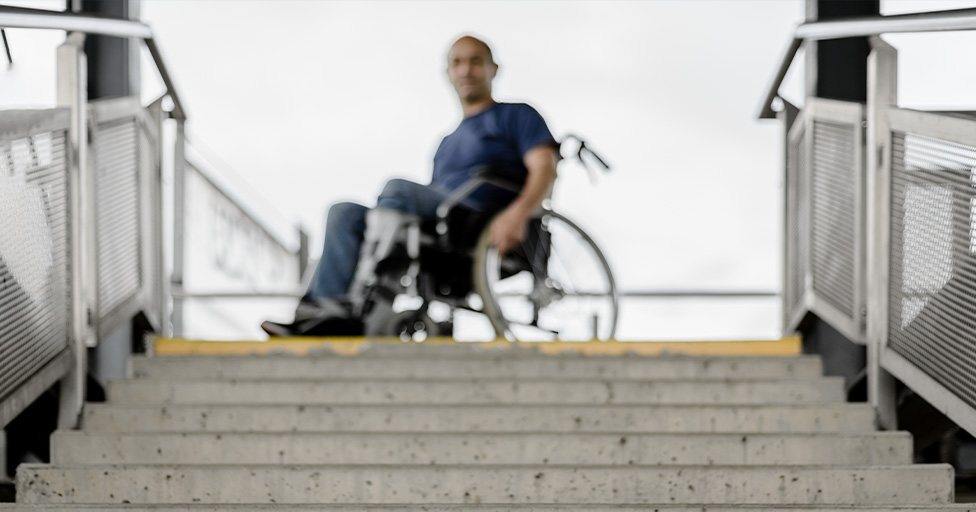Creating a diverse and inclusive workplace is no longer just an ideal, it’s a necessity.
Are you among the mere 22% of employers that know one-in-six Australians have a form of disability? That insight is from the APM Disability Diversity and Inclusivity Index of Australian Workplaces. The study also found that 58% of workers with a disability often feel anxious or nervous revealing their disability to their employer.
Yet eight in 10 businesses want to hire people with a disability.
Accessibility plays a key role in achieving this goal. By removing barriers for individuals with disabilities, workplaces can unlock a wider talent pool and foster a more equitable environment where everyone thrives.
The Disability Discrimination Act (DDA) 1992 is a key piece of legislation in Australia, ensuring equal access and combating discrimination against people with disabilities.
The DDA and Your Workplace
The DDA is a comprehensive law that prohibits discrimination based on disability across various aspects of life – past, present, and future disabilities as well as disabilities that people are assumed to have.
Temporary and permanent disabilities diseases or illnesses covered under the Act include:
- Physical
- Intellectual
- Sensory
- Neurological
- Learning, and
- Psychosocial, as well as
- Physical disfigurement
- Medical conditions, and
- Work-related injuries.
Section 23 specifically focuses on access to premises, ensuring people with disabilities have equal opportunities to access and use workplaces. This complements other sections of the DDA that cover areas such as employment, education, and access to goods and services.
Discrimination under Section 23 occurs when someone with a disability faces disadvantages in accessing a workplace compared to someone without a disability. For instance, a workplace lacking ramps or having narrow doorways could be deemed discriminatory.
Premises Covered by the DDA
Section 23 applies to a wide range of public and private premises, including workplaces, ensuring accessibility for all. Public footpaths, educational institutions, shops, parks, public transport facilities, and government buildings are all covered.
Non-discriminatory access to these premises is crucial for ensuring full participation in society.
However, there are exemptions – this Australian Human Rights Commission website offers more information.
Accessibility Challenges and Solutions
Many workplaces still face accessibility challenges. Common barriers include uneven surfaces, lack of accessible toilets, stairs without ramps, and narrow corridors. These limitations can lead to discrimination complaints under the DDA.
Fortunately, many accessibility issues can be resolved. A recent case involved a restaurant that lacked a wheelchair ramp. After a complaint, the restaurant installed a ramp, ensuring everyone could enjoy their dining experience. These examples demonstrate the positive impact of addressing accessibility concerns.
Making Your Workplace Accessible
Employers and building owners have a responsibility to ensure their workplaces are accessible. Here are some steps to consider:
- Conduct an accessibility audit to identify any barriers
- Develop an accessibility plan outlining improvements and timelines
- Invest in accessibility features like ramps, wider doorways, and accessible restrooms, and
- Ensure there is clear signage and adequate lighting in all areas.
The above points cover physical accessibility, but your processes, policies and staff training should also come under the spotlight. For example, this could be where a business only offers wheelchair access to pricier seating areas in a theatre/club, or refuses to serve someone with slurred speech with a brain injury assuming they’re intoxicated.
Learn about the seven principles to guide the design of your work environment, products, and communications. A good point this article in The Conversation makes is that only providing rear door access to people with a disability is akin to ‘backdoor treatment’, therefore evokes feelings of indignity and discrimination.
There are funding options to make modifications, and adjustments to workplaces. Find out more from the Australian Government’s Employment Assistance Fund. It offers up to $60,000 for building modifications such as for lifts, wheelchair accessible toilets, access ramps and automatic doors, for instance. The fund also includes support for disability awareness training for your workplace, such as this one that the Australian Disability Network runs.
While we’re talking money, research shows employers reap $40 in savings for every dollar they invest in workplace adjustments to support staff with a disability.
The Importance of Proactive Measures
Taking a proactive approach to workplace accessibility is essential. By actively addressing accessibility concerns, employers can avoid potential discrimination complaints and create a more inclusive work environment. Resources such as those by IncludeAbility offer valuable guidance.
Workplace accessibility, as mandated by the DDA, is about compliance and creating a society where everyone feels welcome and included.
By assessing and improving accessibility in our workplaces, we can foster a more inclusive and equitable Australia for all.







